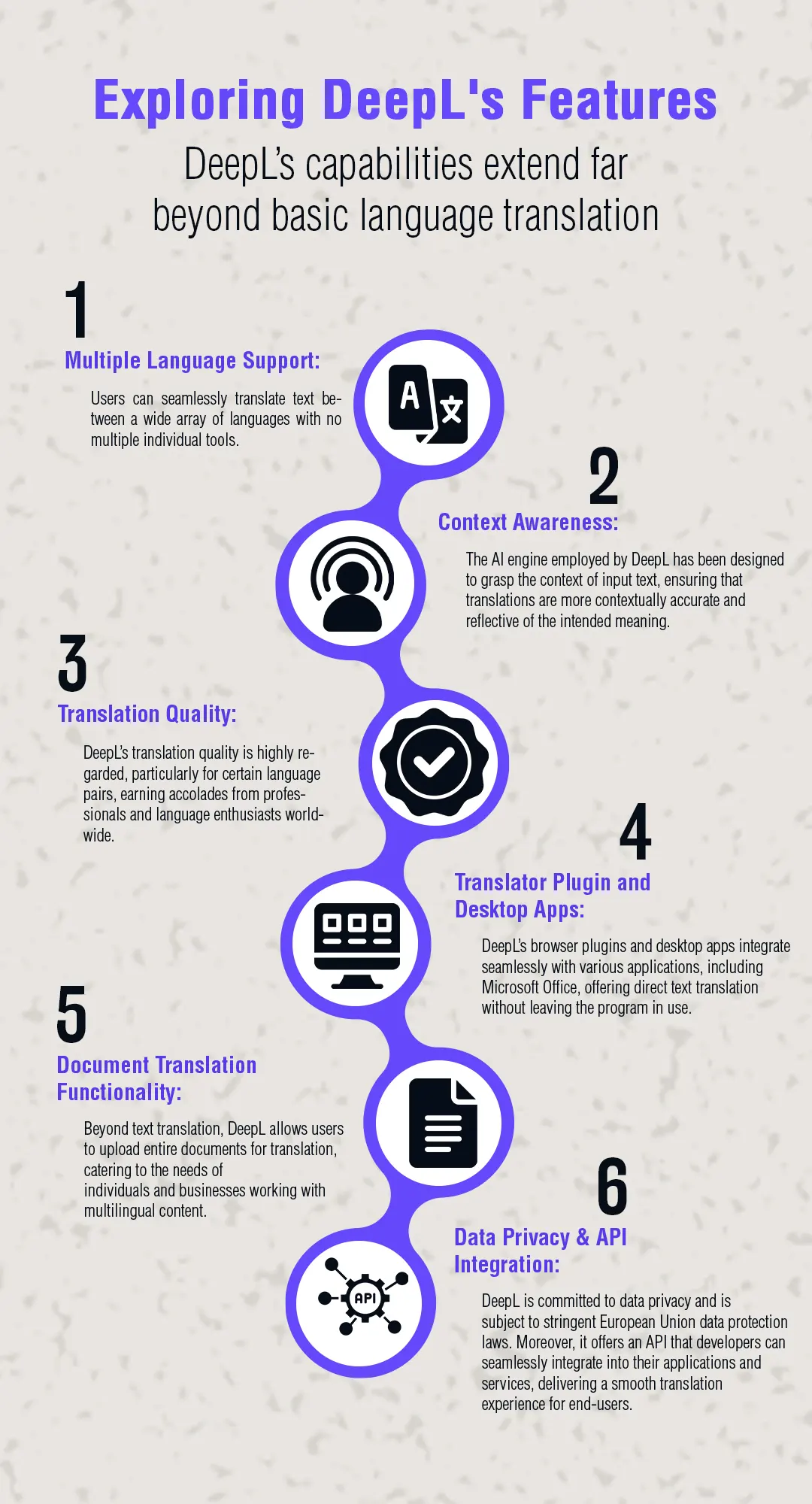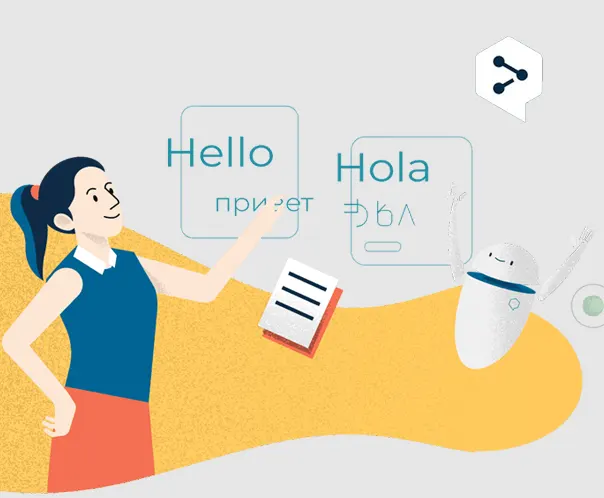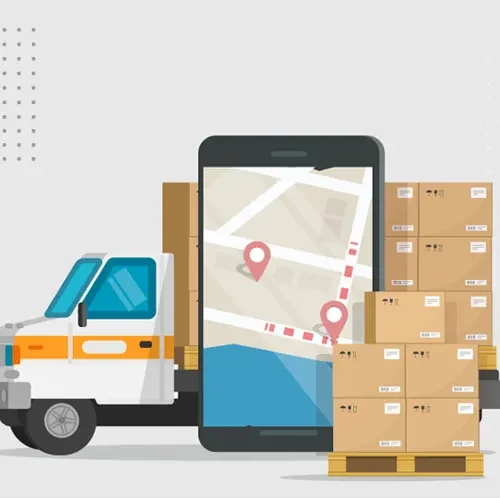The higher adoption of machine translation (MT) technology has shifted our daily business practice has conveyed the most convenient communication across languages by removing barriers to nurturing intercultural connections across communities in our increasingly globalized world.
The journey of MT began as an experimental endeavor in the 1950s when language translation was a pioneering application of computing power. During the 21st century, MT has developed into a powerful productivity tool, which reshaped our language interaction across linguistic challenges.
Businesses and individuals alike have felt the follow-up of language barriers, which interfere with seamless communication and hinder international commerce. The need to bridge these linguistic gaps is led by On-Demand DeepL Translate apps. It allows users can be able to translate messages accurately and effortlessly across nonnative territories.
Language translation apps, exemplified by innovative Apps like DeepL Translator, have become essential tools in promoting cross-cultural communication.
DeepL Translator, a German-made app, has swiftly ascended to the summit of language translation technology.
Its ability to provide accurate and contextually fine-tuning words and translations indicates it is a preferred solution for millions seeking to overcome language differences. Unlike traditional language translation tools that struggle with linguistic subtleties, the DeepL Translator app seamlessly works in algorithms and neural networks to understand and convey meaning with unparalleled accuracy.
This AI-powered machine translation tool is reshaping global business landscapes. DeepL Translator app, a favorite shoo-in the MT domain. The ability to communicate effectively exceeds mere language command; it directly influences the success of companies launching into new markets. Tools that facilitate comprehension and engagement across languages are invaluable assets, leverage businesses to expand their reach, and cultivate meaningful relationships with global audiences.
This technological expertise is not just about transcribing words; it’s about learning context, tone, and cultural implications, making communications more meaningful.
We need to deeply understand how the DeepL app works, understand best practices for leveraging it in professional translation projects, and conduct a DeepL vs Google Translate comparison to reveal the functional advantages of this innovative tool. Furthermore, we need to explore the approximate costs involved in developing an app like DeepL Translate app, and identifying key features essential for such an app further elucidates the transformative potential of MT technology.
Power of DeepL: Applied Deep Learning In Machine Translation!
Language translation techniques have transformed dramatically in recent years, thanks to the advent of advanced deep learning techniques. At the forefront of this revolution is DeepL, a company that has mobilized the power of neural machine translation to deliver highly accurate, contextual translations to over a billion users across 28 languages.
The Story Behind DeepL
The engineers at DeepL took a fresh approach by leveraging the latest deep learning techniques to train their models using the extensive data available in Linguee’s database. This innovative strategy propelled DeepL to meteoric popularity since its inception in 2017, with its services being employed by over a billion individuals worldwide.
The platform offers impressive support for 28 languages, providing 650 potential translation combinations, making it an invaluable tool for multilingual communication on a global scale.
Diving into DeepL’s Technology!
DeepL’s effectiveness lies in its application of neural machine translation, a significant improvement from the traditional rule-based and statistical machine translation systems. This sophisticated approach allows the neural network to consider the entire input sentence during the translation process, resulting in translations that are strikingly human-like in their fluency and correctness.

So, Apps like DeepL Translator represent the forefront of machine translation technology, combining deep learning algorithms with innovative features to revolutionize linguistic communication on a global scale.
With its commitment to excellence, context, and privacy, DeepL is shaping the future of language translation, one perfectly translated phrase at a time.
Exploring DeepL’s Rivals: Competitors in the Machine Translation Domain!
Because of the large usability of language translation tools, many competitors offer stiff competitive multi-lingual translating tools to the market. Several significant players are vying for the top spot alongside DeepL.
Let’s take a closer look at some of DeepL’s major competitors!
Google Translate: Language at Your Fingertips!
Google Translate, born in 2006, made a notable transition from a statistical machine translation model to a neural machine translation (NMT) model in 2016 – just a few months before DeepL’s emergence. One of the most prominent features of Google Translate is its extensive language support, with over 133 languages. It is free to use in most cases, although there are usage limits for API access and high-volume translation. The platform’s user-friendly interface and intuitive design have made it a popular choice among casual users. Beyond text translation, Google Translate also offers the ability to translate entire websites, images, and even speech.
Systran Translate: Pioneering the Field!
Systran Translate traces its roots back to 1968 when it became the first commercial machine translation software available. A remarkable feature of Systran is its open-source ecosystem for neural machine translation and neural sequence learning, known as OpenNMT. With support for over 50 languages, Systran Translate allows users to personalize the translation output by incorporating their own glossaries, dictionaries, and corpora. This flexibility makes it a favored option for users who require a customized translation experience.
Microsoft Translator: Seamlessly Integrated
Microsoft Translator, integrated into Bing (Microsoft’s search engine) and revered as a built-in function in Microsoft Office applications, was launched in 2009 and powered by advanced neural network technology with an attention-based model. Over time, Microsoft Translator has developed and now boasts support for over 100 languages. To cater to the needs of mobile users, Microsoft also offers a standalone mobile app available on both iPhones and Android devices. This app enables users to conveniently access speech and text translation services with ease.
As with any competitive landscape, each machine translation tool has its unique strengths and features that cater to the diverse needs and preferences of users.
Whether it’s the extensive language support of Google Translate, the flexibility of Systran Translate, or the seamless integration with Microsoft products offered by Microsoft Translator, the options are plentiful for individuals seeking accurate and efficient machine translation services.
During the entire ever-evolving space, DeepL continues to hold its ground as a formidable competitor, driven by its strong neural machine translation capabilities and focuses on delivering accurate and contextually aware translations to its broad user base.
DeepL vs Google Translate: Solving the Translation Conundrum – which is more suitable?
One of the age-old questions in the sphere of machine translation persists: Is DeepL more ideal than Google Translate? Solving this enigma isn’t as straightforward as one might think, as the devil is in the details and the nuances of individual preferences.
In the broader context, DeepL is often heralded for its accuracy when pitted against
Google Translate. The precision of its translation engine has picked up a loyal following among users seeking reliable and contextually-aware translations.
However, it’s important to note that DeepL does have its own set of limitations. For instance, its language selection is more constrained compared to the extensive array of languages supported by Google Translate.
If you wish to use DeepL’s full ability, including features like document translation with original formatting security and the option to toggle between formal and informal records, a premium account is required.
One of DeepL’s unique features that sets it apart from Google Translate is the ability to click on any translated word within the output box to instantly explore alternative translation options.
This interactive feature empowers users to select the most fitting translation, with the subsequent text automatically updating to reflect the change—a level of customization not commonly found on other platforms.
For data security, both Google Translate and DeepL’s free versions store the translation history. Conversely, DeepL Pro offers top-tier data protection standards and promptly erases your translated texts, making it an attractive choice for safeguarding sensitive content.
The eternal showdown between DeepL and Google Translate essentially boils down to your specific needs and preferences. If you’re seeking an affordable and user-friendly translation tool with an expansive language repertoire that requires minimal customization, Google Translate may tick all the boxes for you.
Conversely, if pinpoint accuracy, customization options, and data privacy are non-negotiables, DeepL emerges as the frontrunner in the translation game.
DeepL Translate: Decoding Accuracy & Performance!
Measuring the accuracy of a machine translation engine entails navigating through a complex structure and variability. Factors such as language pairs, text complexity, and personalization requirements all influence the final translation output.
Language is a dynamic entity, and assessing accuracy becomes a subjective endeavor. The expectations of grammatical accuracy and fine interpretation differ starkly between a technical document and a simple blog post.
In the perpetual search for flawless translations, App like DeepL continues to make distinctive functionality than any other competitors in delivering accuracy and performance, strengthening its position as a formidable competitor in the multifaceted domain of machine language translation.
Easy Takeaways:
In the promise of efficient and accurate communication enabled by MT like DeepL Translator represents a jump forward in connecting people and businesses worldwide. Adopting these advanced Multilingual translation Tools not only enhances operational efficiency but also strengthens cross-cultural collaborations, and builds easy way solutions for a more interconnected global community.
Maven Technology offers the expertise for complex On-Demand app development projects. Take advantage of our expertise in translation solutions. It connects cultures worldwide by breaking linguistic barriers. Our partnership simplifies and reduces the cost of your app development journey. We can transform ambition into reality. Connect with Maven Technology for digital communication excellence and build DeepL Translate apps from scratch.




